Tags
- #MaterialPropertyTestingMachine
- #MaterialTestingMachine
- #CompressionTestingMachine
- #UTM
- #TensileCompressionTestingMachine
- #HydraulicUniversalTestingMachine
- #HydraulicTensileTestingMachine
- #HydraulicCompressionTestingMachine
- #TensileTestingMachine
- #UniversalMaterialTestingMachine
- #UniversalTestingMachine
- #UniversalMaterialTestingMachineManufacturer
- SALT Co.
- #MaterialPropertyTest
- #PlasticCompressionTest
- #RubberCompressionTest
- #CompressionTest
- #ASTM D574
- #CompressionFixture
| [ASTM] ASTM D575 Standard Test Methods for Rubber Properties in Compression. | |
|---|---|
| Writer : 관리자(salt@light-salt.kr) Date : 24.03.11 Hit : 46 | |
| Tags : #MaterialPropertyTestingMachine,#MaterialTestingMachine,#CompressionTestingMachine,#UTM,#TensileCompressionTestingMachine,#HydraulicUniversalTestingMachine,#HydraulicTensileTestingMachine,#HydraulicCompressionTestingMachine,#TensileTestingMachine,#UniversalMaterialTestingMachine,#UniversalTestingMachine,#UniversalMaterialTestingMachineManufacturer,SALT Co.,#MaterialPropertyTest,#PlasticCompressionTest,#RubberCompressionTest,#CompressionTest,#ASTM D574,#CompressionFixture | |
| Attachments : | |
|
Hello this is SALT CO., LTD. a specialized manufacturer of material testing machines. Today, we will be posting about the international standard ASTM D575.
ASTM D575 is a standard published by ASTM International, the American Society for Testing and Materials, covering "Standard Test Methods for Rubber Properties in Compression." This standard provides test methods for measuring the compression properties of rubber. Compression tests are used to understand the physical properties of rubber and provide information necessary for the design and manufacture of products. The standard covers various compression test methods, each of which may be selected depending on the type of rubber or application. ASTM D575 provides criteria for quantifying and measuring the compression properties of rubber in a standardized manner, helping manufacturers, research institutions, and testing laboratories obtain consistent results. This plays an important role in quality assurance and quality management of rubber products.
ASTM D575 includes two primary test methods :
Method A: This method applies a specific amount of compression to the specimen and measures the force resulting from that compression. It evaluates the force-deformation characteristics of rubber at a specific compression by controlling the compression to a certain amount. 1.Prepare the test specimen as described in the method. 2.Adjust the load and position to zero. 3.Apply force until the specified deformation occurs. 4.Immediately release the force at the same rate and repeat the loading cycle for the second time. 5.Apply force again until the specified deformation for the third time.
Method B: Method B applies constant minor and major forces to the specimen and measures the deformation. It evaluates the deformation characteristics of rubber when subjected to various compressive forces. 1.Prepare the test specimen as described in the method. 2.Adjust the load and position to zero. 3.Apply a specified minor force. 4.Apply the major force for 3 seconds and stop the test. 5.Read the deformation and calculate the percentage deformation based on the original thickness of the specimen. The reading should not include the deformation caused by the minor force.
Salt Co.'s recommends the following model for material testing:
Hydraulic Universal Testing Machine
Compression test with SALT Co., Ltd.'s universal material testing machine.
Salt Co., Ltd.'s all-purpose material tester provides a variety of grips, extensometers and test solutions to meet the requirements of physical property testing of various materials.
"We value our relationship with you more than just selling our products."
Salt-s@Light-Salt.kr www.light-salt.kr |
|
| Prev | ISO 148-1: Metallic Charpy Impact Test |
| Next | ASTM D624 Standard Test Method for Tear Strength of Conventional Vulcanized Rubber and Thermoplastic |
|
|
























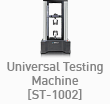


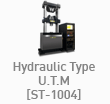
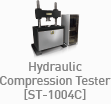
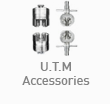


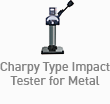






















































































![[포맷변환]close-up-of-the-sneaker-s-sole.png](http://www.light-salt.kr/admin/data/webedit/20240311151736_63751933.png)
![[포맷변환]writing-a-work-process.png](http://www.light-salt.kr/admin/data/webedit/20240311152914_61099903.png)




